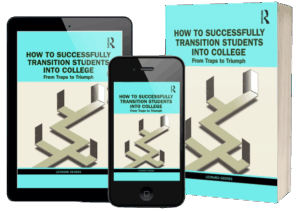By Leonard Geddes.
Last summer, I had a simple job to do: hang a new address sign on my stone mailbox. I grabbed my drill and got to work. Drilling the hole was supposed to take 30 second max. Or so I thought.
I pressed that drill into the stone and I got nowhere. I pressed harder and harder in the blazing summer North Carolina summer heat. I got lots of smoke but no hole.
After several sweaty, smoky minutes, I’d barely made a dent. I was getting nowhere. Then it hit me—I had the wrong drill bit. I jogged up the driveway to my garage and swapped it out for a masonry bit and finished the job in 3 effortless seconds.
It wasn’t a work problem. It was a tool problem.
That experience returned to my mind during a recent consultation with a professor at a faith-based university. She was teaching an asynchronous Human Sexuality course, and while the course appeared well-structured on the surface, something wasn’t clicking—literally and figuratively.
When Participation ≠ Progress
The course used an e-textbook with special software that tracked standard student metrics—clicks, time-on-page, platform usage. Her grades were heavily participation-based.
But here’s the catch: students were getting high marks just for showing up digitally. Clicking through content. Logging time.
They were using a “regular drill bit” when the course demanded higher-order cognitive tools.
As presently designed, the course rewarded for motion, not meaningful progress toward what wanted students to learn.
Learning Outcomes: Vague Tools Lead to Vague Thinking
When we reviewed the course learning outcomes, we saw another issue. The original outcomes lacked cognitive clarity. They didn’t tell students how to think, or what kind of thinking would be required to succeed. This type of ambiguity creates the Cognitive Traps that are common in classroom, which I cover in How to Successfully Transition Students into College: From Traps to Triumph.
The Right Tool for the Right Job
To solve the problem, we used my Compendium of Thinking Skills to break down the mental tools students needed—skills like identification, abstraction, and evaluation.
Here’s how we rewrote the learning outcomes using the right cognitive bit for the job:
| Original | Revised with Thinking Skills |
|---|---|
| Demonstrate knowledge of concepts | Identify: Communicate the core theories, principles, and concepts related to human sexual behavior. |
| Evaluate myths and misconceptions | Abstraction: Apply these concepts to real-world clinical scenarios to detect and challenge misconceptions. |
| Apply psychological principles to everyday life | Evaluation: Assess claims based on factual evidence to become a critical consumer of psychological knowledge. |
These outcomes did more than clarify expectations—they provided students with a thinking roadmap. They helped the professor teach with greater intentionality. And most importantly, they empowered students to work smarter, not harder.
🧠 Is It Really a Student Problem—or a Tool Problem?
Before we assume students are unmotivated, disengaged, or underprepared, we need to ask:
Are they using the wrong bit?
They may be drilling with all their might, but if we haven’t shown them the right mental tool, we shouldn’t be surprised when they make no progress—and burn out trying.
Questions for Reflection (and Course Review)
Student performance improvement begins with well-conceived and well-crafted learning outcomes. I recommend using the six elements in my metacognitive learning outcome rubric. They focus faculty and empower students.
Teachers and students raves about how metacognitive learning outcomes transform their environments, like in this video from Denison University.
-
Are your learning outcomes guiding students toward specific thinking skills?
-
Do your course tools measure learning—or just activity?
-
Could your assessments and metrics be giving students a false sense of progress?
-
What “bit” do your students think they’re using—and is it the one that actually works?
Final Thought: Stop Sweating, Start Sharpening
Instruction isn’t just about effort. It’s about alignment.
When we use the right tools for the job—especially cognitive tools—students stop spinning their wheels and start drilling deep into real learning.
Because sometimes, the difference between getting stuck and getting it done…
is just the right bit.
✅ Want to Equip Your Faculty with the Right Thinking Tools?
Let’s talk about integrating metacognitive strategies, revising learning outcomes, or using the Compendium of Thinking Skills to strengthen course design.
See you in the comments section below.



1 comment
Leonard Geddes
Hi Valentina,
Thanks for your contribution to the conversation. I could have expounded on each point. However, I struggle to keep things short during our information overload era. I will keep your comments in mind for future posts. Thanks again!